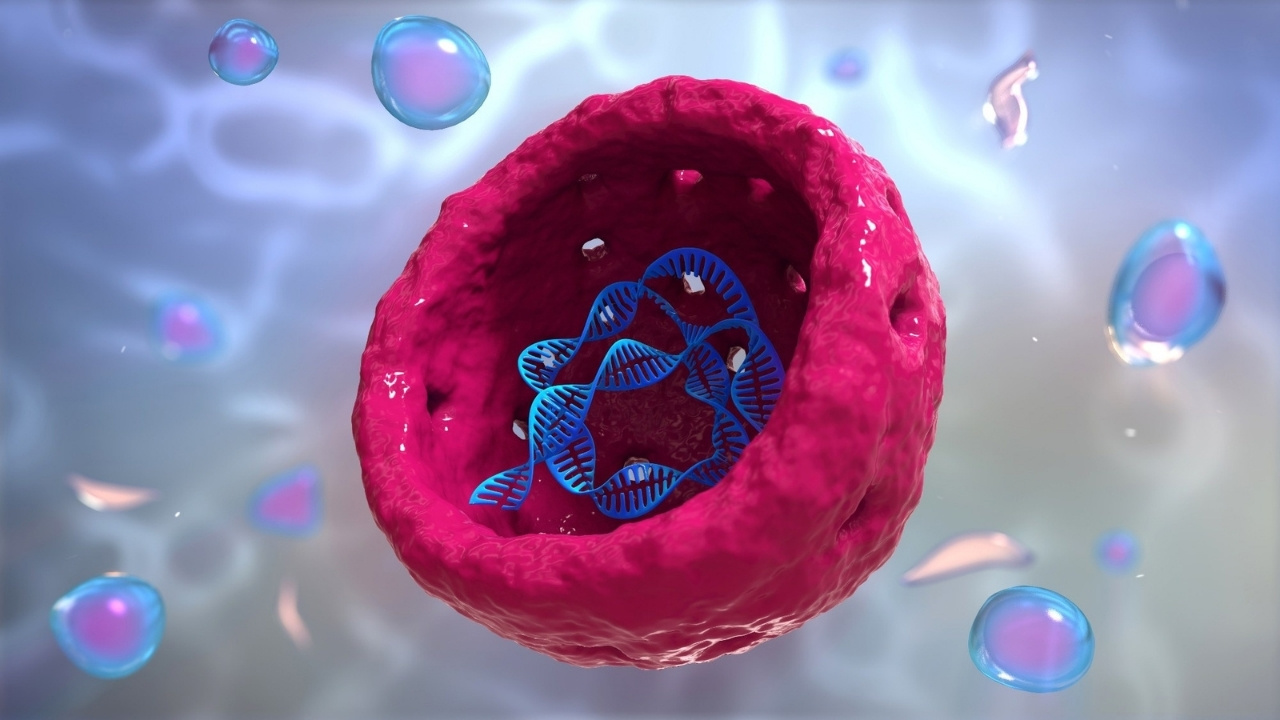
Nuclear pores are tiny gateways in the nuclear envelope, acting as crucial channels for the transport of molecules between the nucleus and the cytoplasm. But what exactly makes these pores so important? They regulate the flow of genetic information and materials, ensuring that essential processes like DNA replication and RNA transcription run smoothly. Without these pores, cells couldn't function properly, leading to a breakdown in vital cellular activities. Did you know that each nuclear pore complex is made up of about 30 different proteins, collectively known as nucleoporins? These complexes are not just static structures; they dynamically respond to the cell's needs, adapting to various conditions. Understanding nuclear pores can give us insights into cellular health, disease mechanisms, and even potential therapeutic targets. Ready to dive into 27 fascinating facts about these microscopic marvels? Let's get started!
What Are Nuclear Pores?
Nuclear pores are tiny gateways in the nuclear envelope of a cell. They control the movement of molecules between the nucleus and the cytoplasm. These structures are essential for cellular function and genetic regulation.
- Each nuclear pore complex (NPC) is made up of about 30 different proteins called nucleoporins.
- NPCs are large, with a diameter of approximately 120 nanometers.
- A single cell nucleus can contain between 1,000 and 2,000 nuclear pores.
- NPCs allow the passage of ions, small molecules, and macromolecules like RNA and proteins.
- The transport through nuclear pores is highly selective and regulated.
Structure of Nuclear Pores
The structure of nuclear pores is intricate and fascinating. Understanding their architecture helps explain their function.
- NPCs have a symmetrical structure with eightfold radial symmetry.
- They consist of three main parts: the cytoplasmic ring, the nuclear ring, and the central transporter.
- The central transporter acts as a gate, controlling the entry and exit of molecules.
- Cytoplasmic filaments extend from the cytoplasmic ring, aiding in the docking of transport substrates.
- The nuclear basket, a network of filaments, extends into the nucleus from the nuclear ring.
Function of Nuclear Pores
Nuclear pores play a crucial role in cellular processes by regulating the exchange of materials.
- They facilitate the export of messenger RNA (mRNA) from the nucleus to the cytoplasm.
- NPCs import proteins necessary for DNA replication and repair into the nucleus.
- They help maintain the distinct environments of the nucleus and cytoplasm.
- NPCs are involved in the regulation of gene expression.
- They play a role in the cell cycle by controlling the import of cell cycle regulators.
Transport Mechanism
The transport mechanism through nuclear pores is complex and highly regulated.
- Small molecules can pass through NPCs by passive diffusion.
- Larger molecules require active transport, which involves specific transport receptors.
- Importins and exportins are transport receptors that mediate the import and export of proteins and RNA.
- The Ran GTPase cycle provides the energy needed for active transport.
- Transport through NPCs is bidirectional, allowing for the simultaneous import and export of different molecules.
Importance in Disease
Nuclear pores are not just structural components; they are also involved in various diseases.
- Mutations in nucleoporins can lead to diseases like nephrotic syndrome and certain cancers.
- Viral infections often exploit NPCs to transport viral genomes into the nucleus.
- Neurodegenerative diseases like ALS and Huntington's disease have been linked to defects in nuclear transport.
- NPCs are targets for certain drugs that aim to modulate nuclear-cytoplasmic transport.
- Research on NPCs is ongoing to develop therapies for diseases related to nuclear transport dysfunction.
Evolutionary Perspective
Nuclear pores have evolved to meet the needs of complex organisms.
- NPCs are conserved across eukaryotic species, indicating their fundamental role in cellular function.
- The complexity of NPCs has increased with the evolution of multicellular organisms, reflecting the need for more sophisticated regulation of nuclear transport.
Nuclear pores are vital to the life of a cell, acting as gatekeepers that regulate the flow of information and materials. Understanding their structure, function, and role in disease can provide insights into cellular processes and potential therapeutic targets.
The Final Word on Nuclear Pores
Nuclear pores are tiny but mighty. They control what goes in and out of the cell's nucleus, acting like security guards. Without them, cells couldn't function properly. These pores are crucial for transporting molecules like RNA and proteins, ensuring everything runs smoothly. They also play a role in cell division and communication between the nucleus and the rest of the cell. Scientists are still learning about these fascinating structures, but one thing's clear: nuclear pores are essential for life. Understanding them better could lead to breakthroughs in medicine and biology. So next time you think about cells, remember the unsung heroes—nuclear pores. They might be small, but their impact is huge. Keep an eye out for more discoveries about these incredible structures.
Was this page helpful?
Our commitment to delivering trustworthy and engaging content is at the heart of what we do. Each fact on our site is contributed by real users like you, bringing a wealth of diverse insights and information. To ensure the highest standards of accuracy and reliability, our dedicated editors meticulously review each submission. This process guarantees that the facts we share are not only fascinating but also credible. Trust in our commitment to quality and authenticity as you explore and learn with us.
